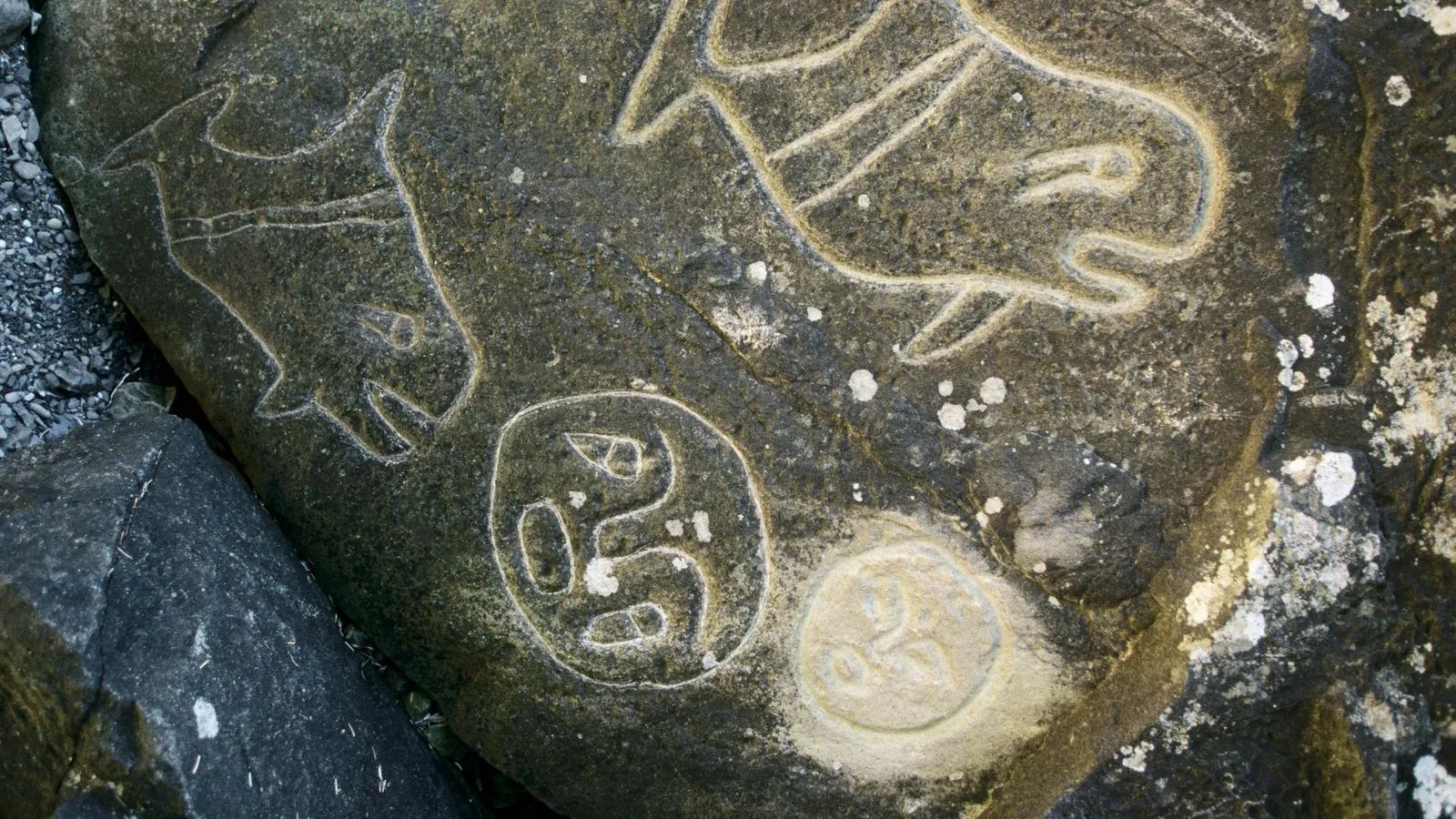By: Aidan Wisherd
Preservation of artifacts can be in a plethora of forms. For the Ozette Site in the Pacific Northwest, mud encased the whaling village dating back to 1700 CE (Renfrew 2018, 58). The Makah tribe’s tremendous history was revealed around 1970 following a weather event in Washington that began to reveal artifacts from the nearly 2000 year old whaling village (Renfrew 2018, 58). Ozette displayed past environmental and natural events, along with a deep history of the people that lived on the land.

Figure 1. Rocks surrounding the excavation site display carvings dating back to before the mudslide of the Ozette Site in 1700 CE (Sainsbury 2022)
Ozette brings to light many key archaeological lessons to take as the examination of further Indigenous sites continues. Washington State University had been examining archaeological sites near the Makah’s land since the 1940s, but their breakthrough 20 years later was incomparable (Washington State University 2022). Richard Daugherty, an archaeologist from Washington State at the heart of the excavation and examination of the site for 11 years, prioritized a close relationship with the Makah (Washington State University 2022). This was to ensure both respect and care were taken with preserving and eventually displaying the tribe’s history. The way the artifacts were preserved must also be viewed. Mud worked to encase the history of the whaling village with six cedar houses and tens of thousands of artifacts (Sainsbury 2022). Wet clay surrounded the pieces of the thriving whaling village and acted as a sealant, keeping out air and protecting the pieces from erosion.

Figure 2. Richard Daugherty carefully examines one of the most important artifacts recovered from Ozette, a wood carving of a Whale’s fin (Washington State University 2022)
Crucial to the excavation in Washington was the relationship with the Indigenous peoples of the land. The Makah assisted Daugherty with the cultural context of many pieces that the team could not initially understand (Knight 2015). The relationship between the team and tribe went both ways, with Daugherty and his team working to not only preserve history but to help the Makah find what they previously thought to be lost. From the outset, the tribe was determined to display their artifacts on their land for generations beyond them to see (Sainsbury 2022). In this vein, around 500 pieces are currently on display within a museum that remains on Makah land and serves the local community and those that choose to visit (Sainsbury 2022).
From the excavation of the site and the initial discovery, Ozette teaches us about how archaeology can teach and preserve. Approaching the site in a way that serves the Makah is important for archaeologists to mirror. It must be understood that the work is community-focused, rather than for name recognition associated with a dig or discovery.
Some pieces to view for further discovery:
Ozette: The US’ lost 2,000-year-old village
Makah Museum: Ozette Archaeological Site
———————————————————————————————————
References
Knight, Alexa. 2015. “Discoveries at Ozette.” Northwest Coastal Native Americans. May 28, 2015. https://nwcoastindians.wordpress.com/2015/05/28/discoveries-at-ozette/.
“Ozette: The US’ Lost 2,000-Year-Old Village.” 2022. CAS in the Media . Washington State University. June 15, 2022. https://cas.wsu.edu/news/2022/06/15/ozette-the-us-lost-2000-year-old-village/.
Renfrew, Colin, and Paul Bahn. 2018. Archaeology Essentials: Theories, Methods, and Practice. Fourth edition. Thames & Hudson.
Sainsbury, Brendan. 2022. “Ozette: The US’ Lost 2,000-Year-Old Village.” BBC Travel. BBC. June 6, 2022. https://www.bbc.com/travel/article/20220605-ozette-the-us-lost-2000-year-old-village.

What can we learn from the Ozette example about future collaborations between archaeologists and Indigenous people?
We can learn that communication with local peoples before archaeology is performed on a site or area is key. Archaeologists must not solely think of places for discovery, but also think about how land must still be respected under the wishes of inhabitants both past and present.